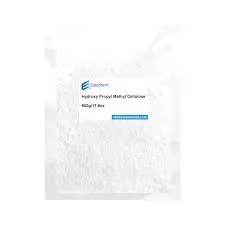
Nov . 27, 2024 21:24 Back to list
Understanding the Composition of HPMC and Its Common Uses
What is HPMC Made From?
Hydroxypropyl Methylcellulose (HPMC) is a cellulose derivative that is widely used in various industries, including pharmaceuticals, construction, food, and cosmetics. Understanding what HPMC is made from provides insight into its properties, applications, and benefits.
The Origin of HPMC
The base material for HPMC is natural cellulose, which is derived from the cell walls of plants. Cellulose is a polysaccharide made up of glucose units linked together. It is abundant in nature and serves as a primary structural component of plant cell walls. The cellulose used to produce HPMC typically comes from wood pulp or cotton linters, which are both sustainable resources.
The Chemical Structure of HPMC
To create HPMC, the cellulose is subjected to a series of chemical modifications. The primary process involves the hydroxypropylation and methylation of cellulose. Initially, cellulose is treated with a mixture of propylene oxide and methyl chloride.
1. Hydroxypropylation In this step, propylene oxide reacts with the hydroxyl groups present on the cellulose molecules, introducing hydroxypropyl groups. This modification enhances the solubility of cellulose in water and gives HPMC unique properties like improved film-forming capabilities and thickening.
2. Methylation Following hydroxypropylation, methylation occurs, where methyl groups are introduced to the cellulose structure. This reaction leads to the formation of methoxy groups, which further increase the water solubility of HPMC. The extent to which cellulose is methylated and hydroxypropylated determines the viscosity and gel-forming characteristics of the final product.
The resulting compound, HPMC, has a complex structure that is soluble in both hot and cold water, allowing it to function effectively in various applications.
Production Process of HPMC
The production of HPMC involves several steps
what is hpmc made from

1. Isolation of Cellulose Natural cellulose is extracted from plant fibers through a multi-step process involving washing, bleaching, and purification to remove lignin, hemicellulose, and other impurities.
2. Etherification The purified cellulose is then subjected to etherification, where it is reacted with alkyl groups to form the ether linkages characteristic of HPMC. This process requires precise control over conditions such as temperature, time, and the concentrations of reactants to obtain the desired properties.
3. Drying and Milling After the etherification process, the HPMC solution is dried to remove excess solvents, resulting in a solid powder. This powdered form is typically milled to achieve the desired particle size suitable for different applications.
Applications of HPMC
HPMC is valued for its versatility and is employed in diverse applications due to its film-forming, thickening, binding, and stabilizing properties
- Pharmaceuticals In the pharmaceutical industry, HPMC serves as a binder in tablet formulations, helping to improve the mechanical strength of tablets and controlling the release of active ingredients. Moreover, it is used in ophthalmic preparations as a lubricant and in controlled-release formulations.
- Construction In construction, HPMC acts as a water-retention agent in cement and mortar, enhancing adhesion and workability. It also contributes to the overall strength and durability of construction materials.
- Food Industry HPMC is utilized as a food additive, where it functions as a thickener, emulsifier, and stabilizer. Its ability to retain moisture helps to enhance the texture and shelf life of food products.
- Cosmetics In cosmetic formulations, HPMC serves as a thickener and stabilizer. It is often used in lotions, creams, and gels to improve viscosity and provide a desirable texture.
Conclusion
In summary, HPMC is made from natural cellulose, which undergoes chemical modifications through hydroxypropylation and methylation to produce a versatile and valuable compound. Its wide range of applications across different industries underscores its significance and utility. The ability to customize HPMC's properties through varying degrees of substitution makes it an indispensable material in modern formulations, contributing to advancements in health, construction, and food technology. With continuous research and development, the potential for HPMC remains vast, promising further innovations in its applications.
-
Premium Cellulose Ether: Effective Liquid Thickener Solutions
NewsAug.29,2025
-
HPMC for Tile Adhesive: Enhanced Bonding & Workability
NewsAug.28,2025
-
tile-bonding-additives-for-stronger-bonds
NewsAug.22,2025
-
construction-grade-rdp-for-wholesale-needs
NewsAug.22,2025
-
trusted-hec-supplier
NewsAug.22,2025
-
HEC Solutions for Industrial Excellence
NewsAug.22,2025







